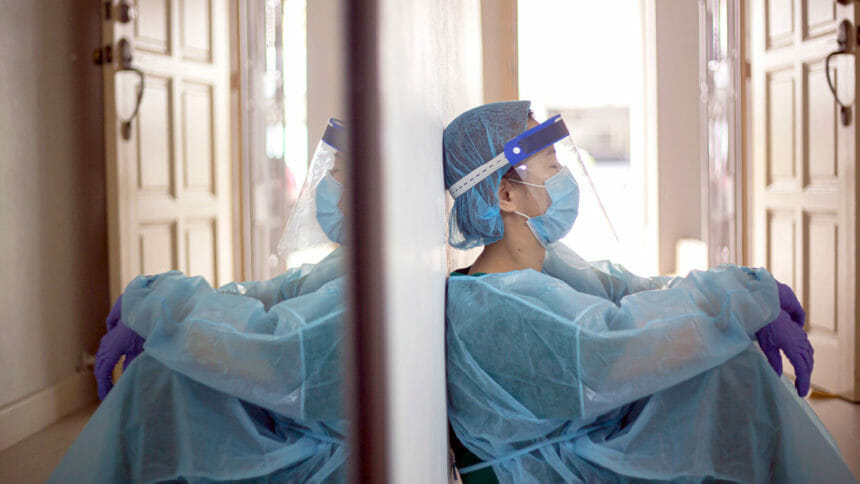
Test, isolate, communicate: Those are the lessons learned by a 100-bed nursing home that managed to get an early COVID-19 outbreak under control in part due to quick strategizing by clinical staff.
Sundale Rehabilitation and Long-Term Care, at one time described as the epicenter of West Virginia’s COVID-19 outbreak, first discovered on March 22 that it had a COVID-19 case in its community. A 72-year-old resident was hospitalized for a change in mental status after suffering a cough and fever for two days. Her nasal swab test was positive for the coronavirus.
Before staff members were able to rid the Morgantown facility of the disease, 52 residents and 19 workers would test positive, and five residents would lose their lives. Yet despite the tragedy of loss and an early lack of information, efforts following the first identified infection helped to limit viral spread and keep the community’s average monthly mortality stable, said Carl Shrader, M.D., Ph.D., chief medical director of Sundale.

By Aug. 20, the facility was considered COVID-19 recovered. The rate of infection among residents was 53%, and mortality was 5%. These figures (better than reported world averages for long-term care facilities) are directly related to the response of the facility, the local healthcare system, and state, said Shrader, who is also a physician researcher at West Virginia University Medical School.
A study of Sundale’s infection control response, published in the Journal of Applied Gerontology, fully details the most helpful strategies and the biggest challenges the community faced, summarized here:
Potential pitfalls:
- Communication on all levels (residents, staff and families)
- Management of fear and expectations
- Effects of isolation on residents regardless of a positive or negative test for COVID-19
Shrader and colleagues recommend implementing transparent, proactive communication with staff and families, and taking advantage of video call technology when possible. This helped to alleviate concerns and help maintain worker availability (explained in the study).
They also advise that staff members should be prepared to offer extra encouragement with meals and intravenous hydration. This is in response to “significantly decreased oral intake resulting from the psychosocial impacts of isolation regardless of the resident’s COVID-19 status.”
Best practices and lessons learned:
- Early testing
- Early isolation
- Daily physician availability on site
- Communication with the local health system about equipment, testing needs and capacity
- Community-centric approach rather than a hospital-centric approach to managing the outbreak
To limit transmission risk to residents, emergency medical services staff, and hospital and emergency department staff, residents’ medical needs were handled in the nursing home whenever possible, Shrader and colleagues reported. “We only transferred residents to a higher level of care when absolutely critical.”
The researchers also recommend repeat testing of residents at one and two weeks after an initial negative test, to ensure that all cases are identified and isolated.
Months after COVID-19 cases were first discovered in U.S. nursing homes, there is still a lack of information on an appropriate response to such an unprecedented event, Shrader said.
“We hope our lived experience of wins and failures can aid others in making more informed and evidence-supported decisions in dealing with outbreaks now and in the future,” he concluded.




